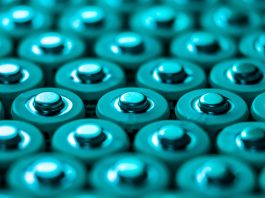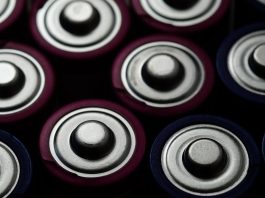Scientists from the University of Cambridge and Harvard University have collaborated to extend the life of organic aqueous flow batteries.
How can this technology store energy from renewable resources?
The University of Cambridge (UC) and Harvard University (HU) researchers have developed a novel method to dramatically extend the lifetime of organic aqueous flow batteries, thus improving the commercial viability of a technology that has the capacity to store energy safely and cheaply from renewable sources, such as wind and solar.
Extending the lifespan of organic aqueous flow batteries
The procedure functions similarly to a pacemaker, by periodically providing a shock to the system that revives decomposed molecules inside the batteries. The results collected demonstrated a net lifetime 17 times longer than batteries documented in previous research.
“Organic aqueous redox flow batteries promise to significantly lower the costs of electricity storage from intermittent energy sources, but the instability of the organic molecules has hindered their commercialisation,” said Michael Aziz, co-author from Harvard. “Now, we have a truly practical solution to extend the lifetime of these molecules, which is an enormous step to making these batteries competitive.”
Anthraquinones
Scientists have been developing organic aqueous flow batteries for the past decade, employing molecules known as, anthraquinones, which are composed of naturally abundant elements, such as carbon, hydrogen, and oxygen – to store and release energy. However, during their research, the team discovered that these anthraquinones decompose slowly over time, regardless of how many times the battery has been utilised.
DHAQ
Previously, scientists revealed that they could extend the lifetime of one of these molecules, known as, DHAQ. However, the molecule was labelled the ‘zombie quinone’ in the lab, as researchers discovered that if the molecule is exposed to air at just the right part of its charge-discharge cycle, it seizes oxygen from the air. It then turns back into the original anthraquinone molecule — as if returning from the dead.
However, scientists have noted that regularly exposing a battery’s electrolyte to air is not practical. This is because it drives the two sides of the battery out of balance, which means that both sides of the battery can no longer be fully charged at the same time.
Gaining a deeper understanding of the molecules that decompose
To find a more practical approach, the research team developed an improved understanding of the molecules’ decomposition and invented an electrical method to reverse the process.
Scientists from Professor Clare Grey’s group at CU’s Yusuf Hamied Department of Chemistry conducted an in situ nuclear magnetic resonance (NMR) measurements. This revealed the re-composition of active materials by an electric method, the so-called deep discharge.
The research team performed a deep discharge, where in which the positive and negative terminals of the battery get drained so that the voltage difference between the two becomes zero. They then flipped the polarity of the battery, forcing the positive side to negative and the negative side to positive. This revealed the creation of a voltage pulse that could reset the decomposing molecules back to their original form.
“Usually, in running batteries, you want to avoid draining the battery completely because it tends to degrade its components,” noted Yan Jing, co-first author from HU. “But we have found that this extreme discharge, where we actually reverse the polarity, can recompose these molecules — which was a surprise.”
“Getting to a single-digit percentage of loss per year is really enabling for widespread commercialisation because it is not a major financial burden to top off your tanks by a few percent each year,” added Aziz.
The next steps for this investigation into extending the lifespan of batteries
Scientists were also able to demonstrate that this approach works for a range of organic molecules. Next, they intend to investigate how much further they can extend the lifetime of DHAQ and other inexpensive anthraquinones that have been utilised in these systems.
“The most surprising and beautiful thing to me is that this organic molecule can transform in such a complex way, with multiple chemical and electrochemical reactions occurring simultaneously or sequentially,” concluded Evan Wenbo Zhao, first author from UC’s Department of Chemistry, now based at Radboud University in the Netherlands.
“Yet, we are able to unpick many of these reactions and let them happen in a controlled fashion that favours the operation of a redox flow battery.”
The research was supported in part by the US National Science Foundation, the Centre of Advanced Materials for Integrated Energy Systems (CAM-IES), the Engineering and Physical Sciences Research Council (EPSRC), and the Science and Technology Facilities Council (STFC), both of which are part of UK Research and Innovation (UKRI).
References
- Yan Jing et al. ‘Electrochemical Regeneration of Anthraquinones for Lifetime Extension in Flow Batteries.’ Nature Chemistry (2022). DOI: 10.1038/s41557-022-00967-4.









